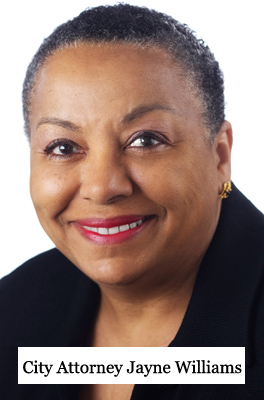 Today (Oct. 3, 2011), the US Supreme Court denied certiorari on the City of San Leandro vs. Faith Fellowship case. As it is its practice, the Supreme Court did not provide a reason for this denial. What this means is that if this case it’s not settled, it will go on to trial. The jury will then have to decide basically whether the Church could have acquired another property in a residential-zoned area of San Leandro that would have suited their purposes. Former city manager Jermanis said in his deposition that it couldn’t. In my opinion, it’s quite likely that the Church would win.
Today (Oct. 3, 2011), the US Supreme Court denied certiorari on the City of San Leandro vs. Faith Fellowship case. As it is its practice, the Supreme Court did not provide a reason for this denial. What this means is that if this case it’s not settled, it will go on to trial. The jury will then have to decide basically whether the Church could have acquired another property in a residential-zoned area of San Leandro that would have suited their purposes. Former city manager Jermanis said in his deposition that it couldn’t. In my opinion, it’s quite likely that the Church would win.
The question now is one of damages. How much would the Church be awarded if it went to trial, and how much should the city offer to settle for so as to avoid going to trial. Previous statements by the Church, suggest that they’ll be asking for as much as $3.7 million in damages, the $1.2 million they paid in mortgage payments while the owned, but could not occupy the Catalina St. property, and the $2 million they lost when they finally had to sell it. To that we should add the Church’s attorney fees, which could be in the hundreds of thousands of dollars (the City of San Leandro itself has spent about $600,000 on this lawsuit).
The city has an ace up its sleeve, however. Quoting from a previous post: “it is not clear that RLUIPA [the Religious Land Use and Institutionalized Persons Act, under which this case is being fought] allows for money damages. While some courts have found that it does, following the Supreme Court’s reasoning in Franklin v. Gwinett, the US Supreme Court just ruled in Sossamon v. Texas (a case involving prisoners’ religious rights) that the phrase “‘[a]ppropriate relief’ is open-ended and ambiguous about what types of relief it includes” and that, at least in the case of lawsuits against states (which, unlike municipalities, enjoy sovereign immunity) it should not be interpreted to include monetary damages. Now, because the Sossamon court ruled on very specific circumstances, it’s not clear how lower courts will interpret the decision. They may very well conclude that it would be inconsistent to read RLUIPA’s grant of “appropriate relief” to include monetary damages when the state actor is a municipality or county, but to not include them when the actor is a state. Or they may decide that the fact that Supreme Court specifically differentiated Sossamon from Franklin means that Franklin applies to non-sovereign RLUIPA defendants.”
This means that while the city has almost certainly lost the case, the matter of how much – if anything – it will have to pay Faith Fellowship is still in the air. The city could chose to try its chances at a trial and, if it loses (as it’s likely), fight the question of monetary damages. It once again can go up the appellate ladder all the way to the US Supreme Court. This would certainly please Meyers Nave, the city’s law firm, which has raked in millions of dollars out of the bad advise it’s given the city. Another series of trials and appeals could mean hundreds of thousands of dollars more in their pockets.
The realistic threat of further litigation, which would mean not getting a final settlement for several more years, if at all, might make Faith Fellowship more willing to settle for a reasonable sum. Of course, pursuing settlement options would have been a better choice back in February before the 9th circuit and the Supreme Court said “no” to the City, now Faith Fellowship has much less to lose. But money with which they could buy a new property now is better than money a few years from now.
Whether the city decides to settle or go to trial, I can only hope they will finally do the smart thing and hire a /new/ law firm to represent them. Meyers Nave terrible advise on this case will most likely end up costing the city millions of dollars, and truth be told, we cannot afford to keep taking their advise.
Previous Posts on this subject
San Leandro gears up for Constitutional fight (May 2011)
The Faith Fellowship lawsuit: it’s time for the city of San Leandro to settle (April 2011)
A primer on the Faith Fellowship v. San Leandro lawsuit (April 2011)
A look at San Leandro’s City Attorney: Time to fire Meyers Nave?

 Hires premier anti-RLUIPA advocate to argue for its unconstitutionality
Hires premier anti-RLUIPA advocate to argue for its unconstitutionality

